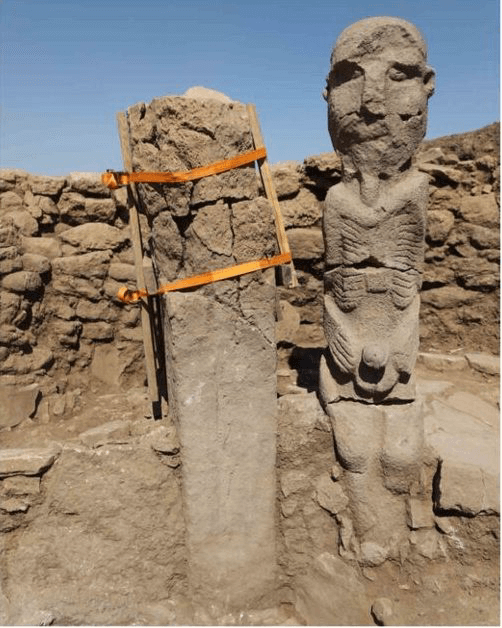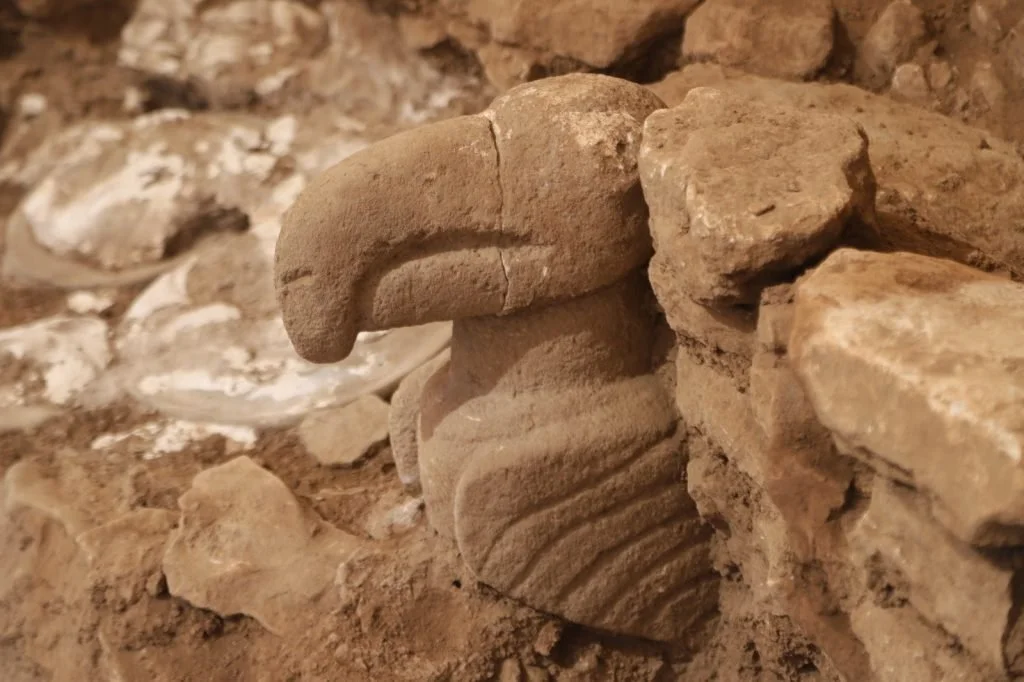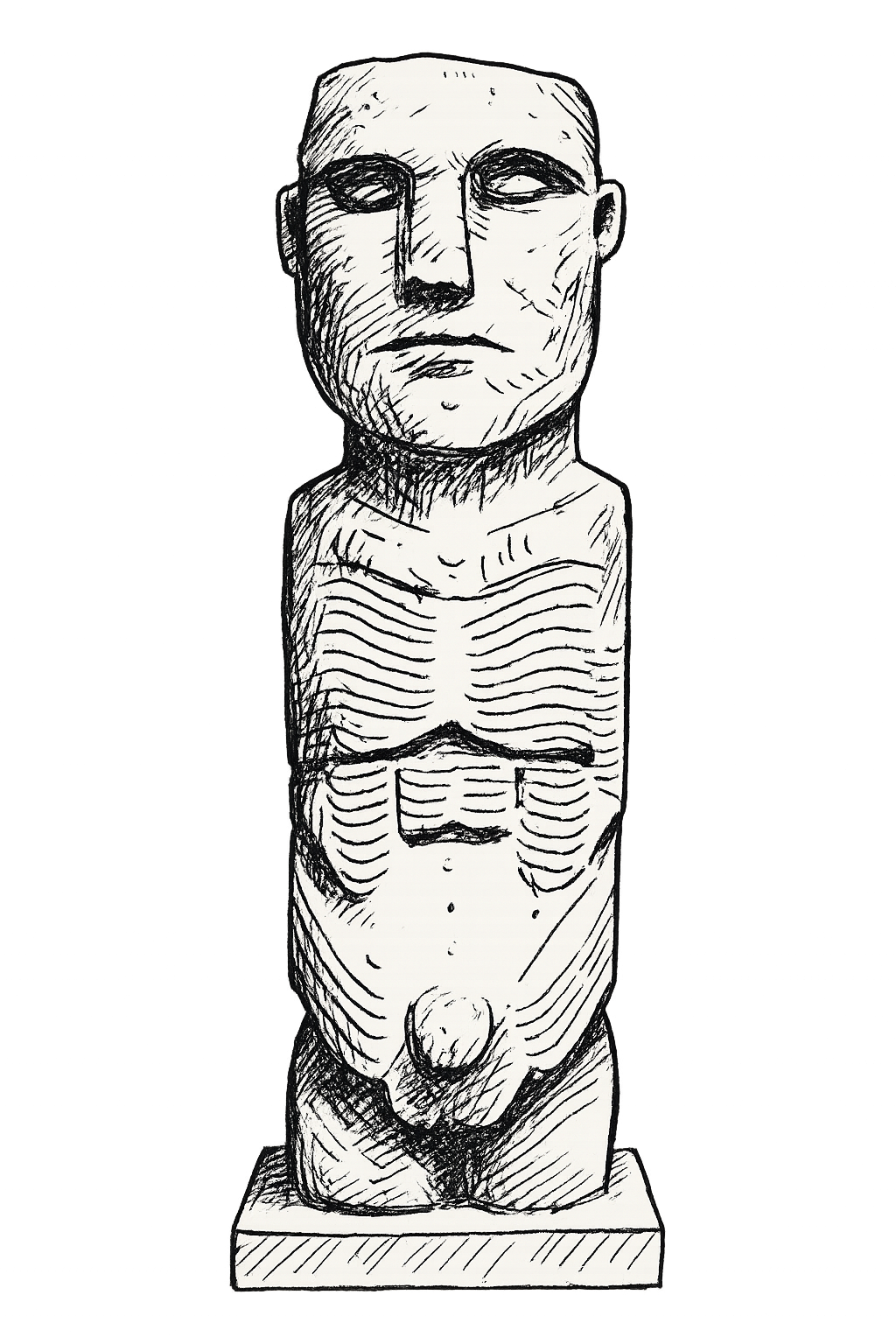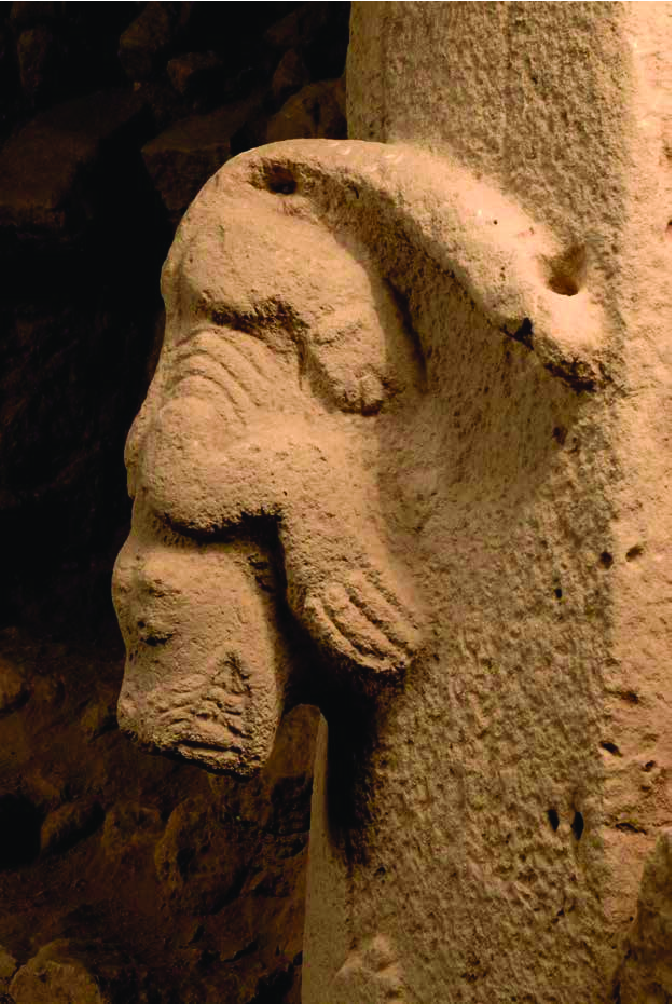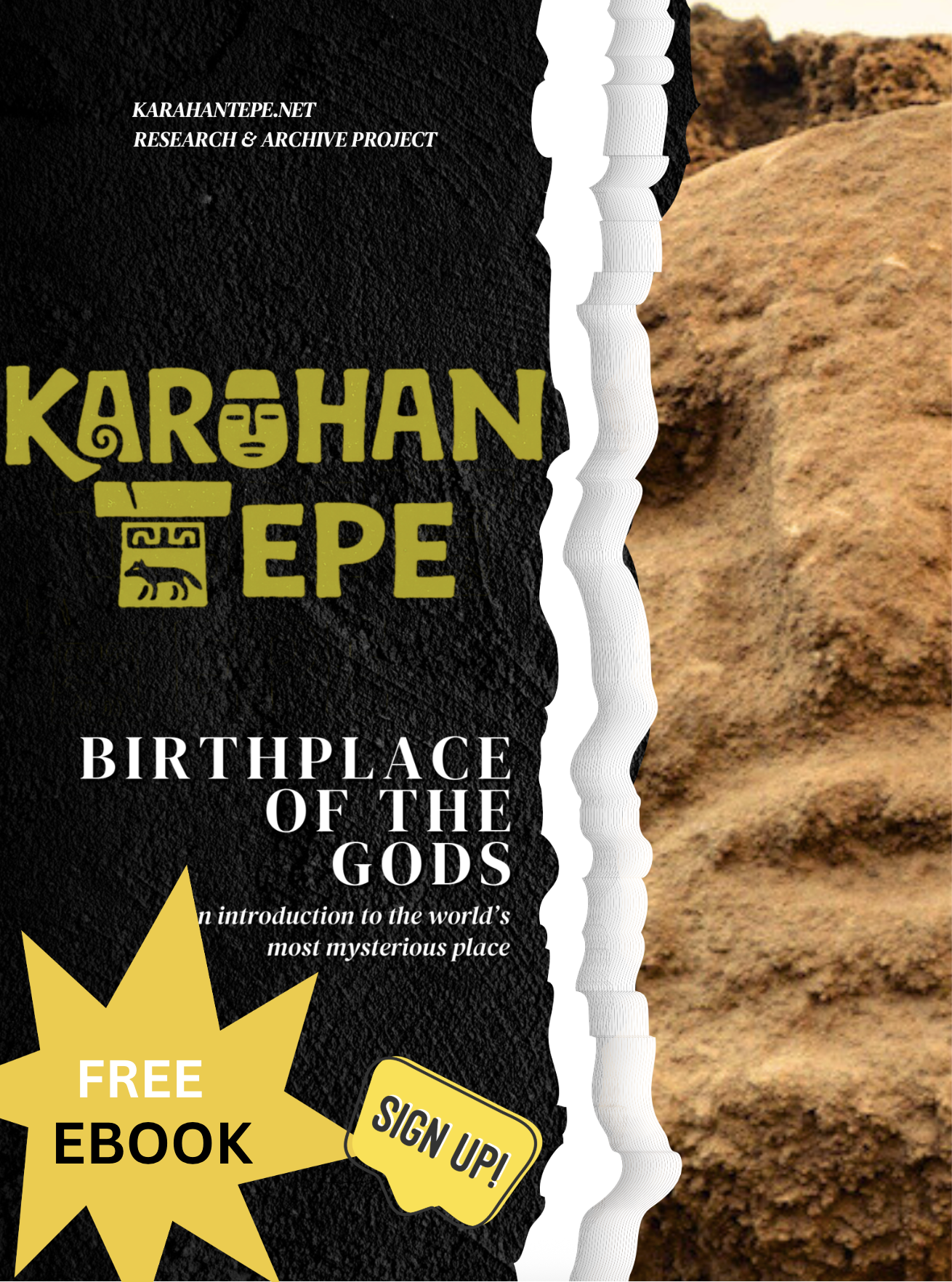The Strange Human Statue Unearthed at Karahan Tepe
One of the first published photos of the Corpse Statue at Karahan Tepe 2023
A Face from the Deep Past
In September 2023, Turkish archaeologists made a discovery at Karahan Tepe that shook the world of prehistory: a 2.3-meter tall statue of a dead man within a niche fixed to the ground, carved in stone dating back to around 9400 BCE.
Seated on a low bench, with deeply etched ribs, clasped hands, and a haunting expression, this statue—now dubbed as ‘Ribbed Man’ or “Corpse Statue”—is one of the oldest known example of realistic human sculpture. Its presence opens an entirely new chapter in our understanding of early human symbolism and ritual.
But who was he?
A community leader? A warrior? A shaman? A god?
Credit: Turkish Ministry of Culture and Tourism
Unearthing the Corpse Statue
The statue was found at Karahan Tepe, one of the largest and most intriguing sites in the Tas Tepeler network of southeastern Turkey. Situated roughly 35 kilometers from the more famous Gobekli Tepe, Karahan Tepe has emerged as a major focus of the Pre-Pottery Neolithic excavation efforts led by Dr. Necmi Karul, head of the official Tas Tepeler Project.
In a stone chamber carved into the bedrock, archaeologists uncovered not only the Corpse Statue but also several other enigmatic elements: plates and bowls, a U-shaped bench, human bones, and a vulture stone - which seems to suggest ceremonial intent. The chamber gives the feeling of a subterranean temple or ritual space, not a domestic structure.
Dr. Karul described the find as a “cornerstone” for understanding early Neolithic art and symbolism, noting that the statue’s anatomical realism and emotional expression were unlike anything found from this era before.
A Closer Look: Features of the Corpse Statue
Let’s break down what makes the Corpse Statue so unique.
Anatomical Detail: The statue’s ribs, spine, chest, and arms are carefully rendered, suggesting not just artistic skill, but an intense focus on the human body as a vessel of meaning at the time of death.
Skulls and plates: No official reports online, but our team was told on site that a skull (or fragments) were found in a square portal hole in the same enclosure. The bowls and plates suggest offerings.
Genital Emphasis: His penis is clearly depicted and intentionally emphasized. A reoccuring motif from the Tas Tepeler sites, pointing toward a potential importance on fertility.
Vulture stone found in same enclosure furthering hypothesis’ of ‘sky burials’
“At Karahan tepe, we found over 10 skull fragments, some of which burnt or exposed to heat. We also observed that tools like flint had been used on them, creating irregular scratches and carvings. These treatments were applied to the skulls at certain intervals, indicating a ritual.” - Necmi Karul
Vulture stone found nearby the Corpse Statue. Is it also ribbed? Credit: Turkish Ministry of Culture and Tourism
Human Forms at Göbekli Tepe: A Comparison
At Göbekli Tepe, human imagery was found but is not as common as Karahan Tepe. At Gobekli Tepe most of the site's pillars are T-shaped monoliths, believed to represent stylized human figures, especially because some show arms, belts, and loincloths.
But the faces are absent.
The pillars have no eyes, no expressions - only arms and symbolism. However, removed stone heads were ritualistically placed within Gobekli Tepe enclosures during its deliberate burial.
The Corpse Statue or ‘Ribbed Man’, by contrast, presents a fully realized individual, complete with emotion, anatomy, and identity. He feels like human being caught in a moment of transformation. Possibly death, ritual ecstasy, or even initiation.
That makes him utterly unique in the entire Neolithic record so far.
What Does He Represent?
Dr. Karul has been careful in his interpretations, avoiding overreach. But he has emphasized the ceremonial context of the chamber where the statue was found, noting that the space was likely used for ritual gatherings, offerings, or rites of passage.
So what could he mean?
🔻 Death and Transformation
The exposed ribs, solemn expression, and subterranean setting suggest a confrontation with mortality. The chamber may have served as a symbolic underworld—a place of death and rebirth in the ritual imagination.
🔺 Ecstasy or Trance
The posture and tension in the statue’s body could point to altered states—perhaps a shaman in trance, extreme fasting, a seeker in initiation, or a figure experiencing ritual intensity.
🔄 Fertility and Power
The exposed genitals and phallic architecture nearby suggest fertility symbolism, possibly linked to creation myths, seasonal renewal, or masculine spiritual force.
Importantly, none of these ideas are mutually exclusive. The Corpse Statue could embody multiple layers of meaning—just as religious art has for millennia.
Why He Matters
The discovery of the Corpse Statue doesn’t just add to our catalog of Neolithic art.
It complicates the entire story of human origins.
It shows us that symbolism, ritual, and self-awareness were present in human societies long before cities, writing, or even agriculture fully took root.
It invites us to rethink what "civilization" really means. Maybe it didn’t begin with farming or politics—but with the sacred.
A ribbed preadtor on pillar 27 in enclosure C at Göbekli Tepe @ D. Johannes, DAI Orient Department
Want to Visit Karahan Tepe?
Karahan Tepe is now open to visitors. While Göbekli Tepe has drawn international attention and a visitor center, Karahan remains raw, windswept, and largely untouched—a living excavation site.
To explore either site respectfully and in-depth, use a reputable guide such as SanliurfaTour.com
Want to Go Deeper?
Sign up for our newsletter and get a free e-book on Karahan Tepe—plus exclusive updates whenever new discoveries emerge from the Taş Tepeler region, including Gobekli Tepe, Karahan Tepe, and beyond.



